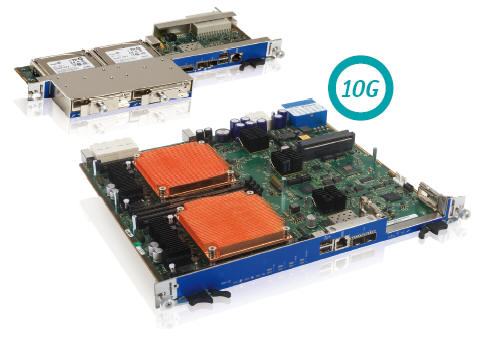Norbert Hauser, Executive Vice President, Marketing, Kontron
Embedded systems are transforming from islands of fixed-function devices to new eras of interconnected intelligent systems. This new design leverages popular connectivity to share data across devices, the cloud, and businesses, enhance business intelligence, enhance user experience, and bring new applications and services that expand market opportunities. In fact, the research firm IDC reported that the smart system market will increase to 2.6 billion units per year by 2016 (Source: IDC, Next Generation Computing: Intelligent Systems, March 2012).
The challenge for OEMs is to bring these systems to market quickly and cost-effectively. The embedded market is now highly fragmented and full of dedicated hardware and software architecture. Intelligent systems need a more standardized approach that supports a wide range of communications, deployments between multiple applications, and edge-to-business scalability.
In this article we will demonstrate how to meet these needs by leveraging Intel® Architecture (IA) as a commercial off-the-shelf (COTS) solution for public innovation platforms. We will also demonstrate the benefits of working with Kontron, a premium member of the Intel® Intelligent Systems Alliance. We will describe how Kontron works closely with Intel to create solutions that provide the performance, connectivity, manageability, and security developers need to create smart connected systems.
Technology-driven elements of intelligent system transformation
Building intelligent systems requires four basic capabilities:
Networking technologies enable a wide range of data sharing between devices and systems. IA's consistency and software compatibility are very much in line with this requirement because it allows rapid deployment of new networking technologies between multiple devices.
Reliable security can expand the width of connected devices. Protecting a widely interconnected system that was once considered as a stand-alone application means that security must be prioritized. Hardware-based Intel® Virtualization Technology (Intel® VT) allows users to create domains and isolate important code and processes across different secure partitions. Other hardware features such as Intel® OS Guard and Intel® Trusted Execution Technology (Intel® TXT) prevent modification of the operating system and provide a secure foundation for booting the system in a known, trusted state. Finally, technologies such as Intel® Advanced Encryption Standards New Instructions (Intel® AES-NI) and Intel® Secure Key provide hardware support for secure communications and data storage.
Manageability features . After the system is connected, it can be remotely managed to improve availability and reliability while reducing costs by limiting the need for field services. Intel® Active Management Technology (Intel® AMT) Help simplifies system maintenance with hardware capabilities, allowing administrators to monitor, diagnose, and repair devices from anywhere in the world, even if these devices lose power or the firmware or operating system is damaged.
Continuing performance enhancements to meet explosive data processing requirements and providing a sophisticated user experience, including excellent graphics performance for rich displays. Intelligent systems span multiple performance points and volume factors, from handheld devices to data centers and telecom infrastructure. Therefore, scalability is the key. The IA satisfies these needs with a complete selection—from the high performance of Intel® AtomTM processors to the excellent visual computing of 3rd-generation Intel® CoreTM processors to the industry-leading performance of the Intel® Xeon® processor.
An approved platform designed to meet the challenge
The variety of intelligent systems, with various volume factors and multiple use models, creates the need for highly flexible design methods. Developers can turn to Kontron and other Alliance members to meet this need, which offers a compatible and scalable solution based on standard volume coefficients. The extensive product range provides end-to-end building block solutions that allow OEMs to meet the full capabilities and requirements of intelligent systems.
Perhaps the most obvious advantage of the standards-based COTS platform and system-level products is the ability to speed up the design process. This is a particularly important element for smarter systems that are more sophisticated than those of past embedded systems. Working with affiliates such as Kontron brings another important advantage: The close cooperation between Intel and the alliance allows OEMs to gain advantages from the first market to new processors integrated in multiple platforms, bringing in various benefits. The latest technological achievements of the application.
Smarter solutions
Kontron's rapid introduction of a 3rd generation Intel® CoreTM processor-based solution explains the benefits of early market entry. Kontron introduced a rich product family at the same time as the processor was started - including COM Express Basic, Flex-ATX, Mini-ITX, AdvancedMC, 3U and 6U CompactPCI, and 3U VPX. These 3rd generation Intel Core processor-based embedded computing platforms provide smarter performance with graphics processing speeds up to 60% and DirectX* 11 support (used for complex applications that previously required dedicated graphics cards). The power efficiency of these quad-core processors also meets the continuing demand for improved size, weight, and power (SWaP). The latest platforms also support new high-throughput interfaces such as PCI Express* Gen 3 and USB 3.0 for interacting with off-the-shelf peripherals such as high-definition cameras without the need for dedicated I/O boards.
When these solutions are integrated and pre-verified with software, the time-to-market advantage of COTS solutions is greatly enhanced. For example, Kontron has tested its 3rd generation Intel Core-based products with operating systems that meet specific embedded requirements, such as Microsoft Windows Embedded POSReady and Microsoft Windows 7 Embedded.
Extensive connectivity
Smart connected devices need to communicate anonymously with other machines and the cloud. Taking into account the complexity involved, it may be difficult to join the connectivity. Machine-to-machine (M2M) applications typically involve multiple hardware networking protocols; contracts with cell phone service providers and other Internet service providers (ISPs); and integration with cloud-based or enterprise-based features such as dashboards, databases, and inventory control. To quickly start these complex systems, developers need a pre-integrated platform that simplifies deployment. The Kontron M2M Smart Services Developers' Kit (Figure 1) is such a resource. This deployment-ready platform frees developers from the complex task of designing multiple network protocols. Intel Atom processor-based suites developed in cooperation with Intel, Wind River, and ILS Technology provide "plug and play" capabilities through a combination of hardware, middleware, and cloud services, allowing designers to develop and test the connectivity and performance of their applications. Then quickly deploy. Kontron's development platform provides designers with two options for broadband wireless connectivity: Plug-in SIM cards are used to integrate 3G or pre-certified standard PCI Express mini cards and SIM cards for 3G/4G.

Figure 1. For maximum design flexibility, the ontron M2M Developers' Kit board and board stack include plug-in module options for 3G.
An important benefit of using an Intel processor such as the Intel Atom processor is the rich M2M software support provided by the Alliance. For example, the Kontron M2M system is preloaded with a 90-day free trial version of Wind River Linux 4.1. The kit also includes the Wind River Live USB driver, which provides software stacks and drivers to support direct wireless connectivity testing. In addition, the suite is pre-verified with I2S Technology and Eurotech's M2M middleware, providing developers with the appropriate building blocks needed to move quickly from concept to reality.
Power efficient performance
The expansion of smart systems will trigger data explosions. To keep up with this demand, a rapid upgrade of the communications infrastructure is required. The AdvancedTCA (ATCA) platform will be the key to achieving these rapid upgrades. The Kontron AdvancedTCA AT8060 node blade amplifies the advantages of this method. It integrates the latest Intel® Xeon® processor E5-2600 series with up to 16 cores and 32 threads in a dual-socket configuration to provide the energy-efficient performance required to handle future data torrents. Provides outstanding memory and I/O performance through the integrated controller and the 8 GT/s QPI interface that supports low latency data transfer between processors. Other notable features include AdvancedMC slots for customizing with packet processing and memory modules, and Kontron customer-controlled power management to optimize performance within a pre-defined power consumption strategy. In short, the Kontron AT8060 provides telecom equipment manufacturers with the high performance, I/O, and memory capabilities required to quickly deploy everything from access systems to core network elements.

Figure 2. Developers of high-computation and content-aware networking applications will find the Kontron AT8060 a powerful and energy-efficient solution.
Rich application and market expansion opportunities
As connected device networks allow various applications to use each other, smart systems are rapidly entering life. OEMs can take a slice of this thriving market by leveraging IT as a rich COTS solution for innovative public platforms. These standards-based building blocks can simplify development, reduce development costs, accelerate time-to-market, and provide developers with important competitive advantages. In addition, the wealth of products provided by affiliates such as Kontron help developers create end-to-end solutions that meet all intelligent system requirements.
About Silicone Cup
Custom Silicone Cup is one of our Silicone Kitchenware,it including Silicone Wine Glasses,Silicone Beer Glasses, Silicone Tea Cup .They are made of silicone,and it's more durable than normal cup,and you can have your design on Silicone Wine Cups ,Silicone Beer Drink Bottle,Custom Silicone Tea Cup.There are many design you can choose,and hope can receive your idea on products.
Product introduction:
1.Product name:Silicone Wine Glasses,Silicone Beer Glasses,Silicone Wine Cups,Silicone Beer Drink Bottle, Custom Silicone Cups ,Silicone Tea Cup
2.Place of origin:Guangdong China
3.Color:any pantone color
4.Effect:Any effect according to customer's requirement
5.MOQ:500pcs.
6.Package:1 pcs/opp,customized design is available.
7.Design:Customized/stock
8.Certification:FDA,LFGB,SGS,ROHS,etc.
9.Usage:Use to Drinking Water/Tea/Coffee/Other Drinks
10.Silicone Cup photos for reference.

Silicone Cup
Silicone Cup,Silicone Wine Glasses,Silicone Beer Glasses,Silicone Wine Cups,Silicone Beer Drink Bottle,Custom Silicone Cups,Silicone Tea Cup
OK Silicone Gift Co., Ltd. , https://www.oemsiliconegift.com